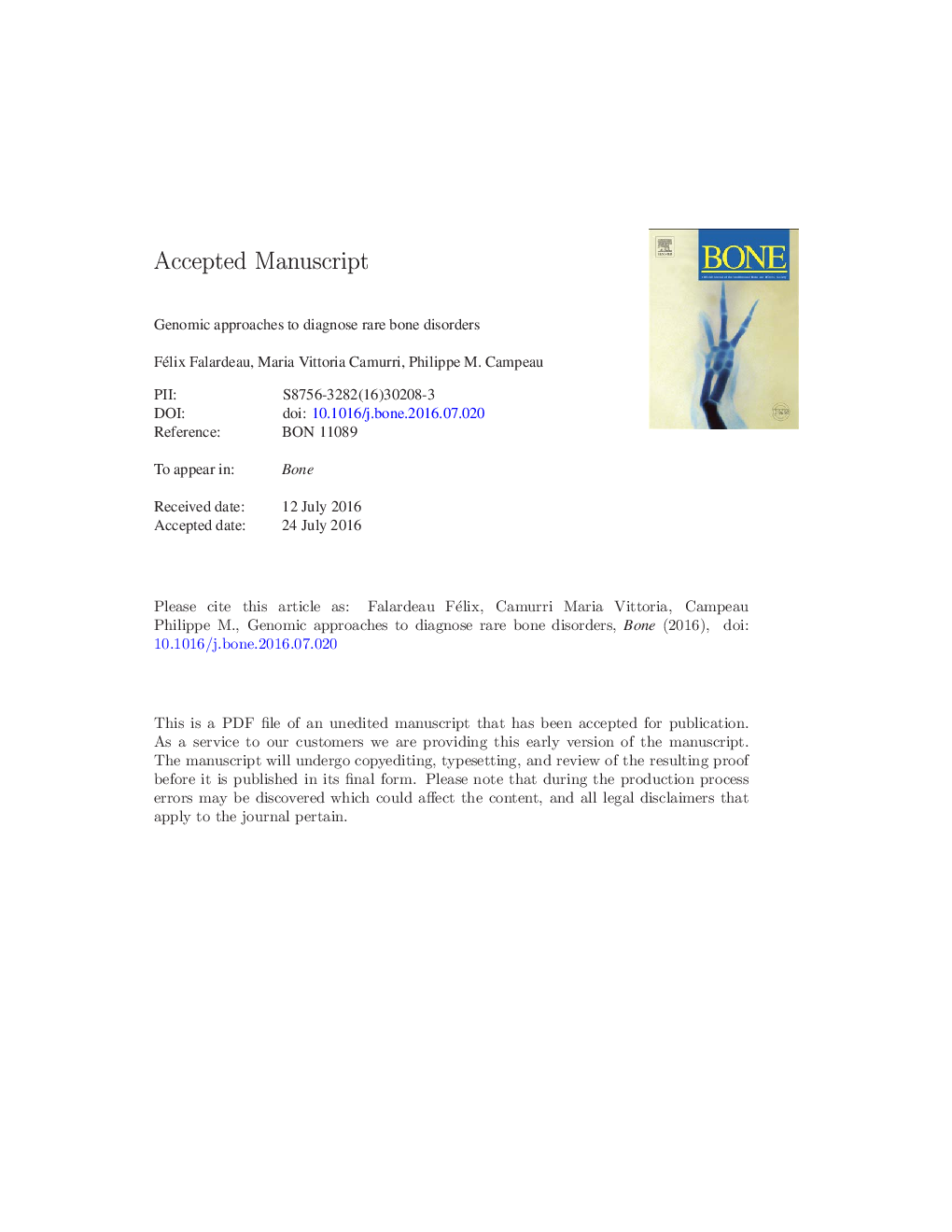| Article ID | Journal | Published Year | Pages | File Type |
|---|---|---|---|---|
| 5585308 | Bone | 2017 | 41 Pages |
Abstract
Skeletal dysplasias are Mendelian disorders with a prevalence of approximatively 1 in every 5000 individuals and can usually be diagnosed based on clinical and radiological findings. However, given that some diseases can be caused by several different genes, and that some genes can cause a variety of different phenotypes, achieving a molecular diagnosis can be challenging. We review here different approaches, from single gene sequencing to genomic approaches using next-generation sequencing, to reach a molecular diagnosis for skeletal dysplasias. We will further describe the overall advantages and limitations of first, second and third-generation sequencing, including single gene sequencing, whole-exome and genome sequencing (WES and WGS), multiple gene panel sequencing and single molecule sequencing. We also provide a brief overview of potential future applications of emerging technologies.
Keywords
aCGHLBMDX-linked recessiveskeletal dysplasiasMucopolysaccharidosesWGBSHEPWESMLPAGAGOPTMIPNGSWGSEDSSNVsAutosomal DominantAutosomal recessiveArray comparative genomic hybridizationOsteoarthritisOsteopetrosisHyaluronic acid/hyaluronanSingle-nucleotide variantsOsteogenesis imperfectaNext-generation sequencingwhole-genome bisulfite sequencingWhole-exome sequencingWhole-genome sequencingEhlers-Danlos syndromeDermatan sulfateHeparin sulfategenome wide association studiesGWASMPsChondroitin sulfateGlycosaminoglycan
Related Topics
Life Sciences
Biochemistry, Genetics and Molecular Biology
Developmental Biology
Authors
Félix Falardeau, Maria Vittoria Camurri, Philippe M. Campeau,
